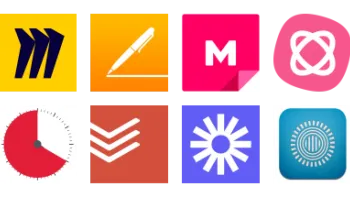Take a look inside 1 video | 7 images
Padlet
Pros: The customizable interface is intuitive, options for education templates, and help is available around every corner.
Cons: Accessibility features are somewhat lacking, and though it's possible to include almost any media, options to add nuance to a Padlet's appearance are limited.
Bottom Line: Flexible interface gives kids opportunities to share content and knowledge in ways most comfortable for them.
Teachers can use Padlet in a 1:1 or virtual classroom on any device. At the start of the year, get to know your students by having them post a selfie or video discussing what makes them unique. In math, use the draw feature to show work: Ask students to solve an equation, and allow kids to comment with the different ways they approached the same problem. For fine arts, create a Padlet and have students post reactions to content they find on a tool like Google Arts and Culture, or have students upload a video of themselves singing or practicing an instrument for music class. Padlet is also great for reflection; ask students to respond to an open-ended question, and encourage them to up-vote, favorite, or respond to their peers' responses. If you're having trouble coming up with ideas, browse the template gallery for inspiration. To keep things school-friendly, you might want to turn on content approval and the profanity censor in the settings menu.
Padlet really shines as a tool for group projects. Divide the class into small groups, and have students work together at home to research a particular subject -- for example, key leaders in the civil rights movement. Each student could devote research to a type of supported media (video, audio, photo, or text), add it to the group's shared wall, and then present the findings in class. Alternatively, let students pool notes together in class for a virtual group study session. Looking for more inspiration? The site's blog and social media pages showcase many examples of how teachers are using Padlet to enhance learning.
Padlet is a website and app that allows students to curate information onto virtual boards called Padlets. The free version only allows for three active Padlets, but upgrading won't break the bank if it's a tool you want to use consistently. Teachers can share boards via links or QR codes, or students can create their own, but either way, blank pages quickly fill up with videos, text, links, documents, GIFs, images -- basically anything -- for other users to see. Kids can add as many notes to a wall as they like, but unless teachers require that they add their names to each one, you won't know who's posting what. Teachers can add moderators and turn on comments and voting features for more collaboration. As added checks against inappropriate content, moderators can turn on profanity filters, screen all posts before making them visible, or require that students display their names on the board.
You can start with a blank board, or begin with one of the premade educational designs like a 3-2-1 summary or an exit ticket. A new generative AI feature allows users to generate whole Padlets according to a range of terms and keywords. There are AI template options like class activity creators, timelines of events, and lesson plan creators.
Students can also upload documents they've created, such as class notes or completed assignments. More than one person can contribute to a Padlet wall, opening the door to teamwork and group projects. Once kids create a wall, there are tons of ways to share it: socially, via Google Classroom, by exporting it to a file, embedding it in a blog or website, turning it into a QR code or present as a slideshow. Students and teachers can send links for parts of the Padlet, or the whole wall. There's also the option to keep walls private, of course, and teachers can lock Padlets to prevent edits and additions. Padlet offers lots of places to get support, including social media pages, an entertaining blog, a FAQ section, and plenty of use cases. A paid upgrade offers features specific to educators' needs, including unlimited Padlets, more upload space, folders, and priority support.
Padlet is one of the more intuitive options for online collaboration that allows for tons of media types. Customization features let kids express themselves and take ownership of their projects. It's an excellent tool for reflection, too. Kids can share written responses, recordings, images, and more, offering easy opportunities to respond in a way that matches their comfort level. The depth of interactions depends on how you set up the walls, but the developer's website and social media pages share lots of helpful examples.
Teachers can choose how they set up their Padlet walls’ privacy so that they can catch inappropriate or error-riddled posts before sharing with the class. This takes a bit of extra time, but it's time well-spent to encourage continued student participation. The walls provide the chance to see student learning at a glance and offer opportunities to solicit appropriate feedback from peers. On the flip side, students who create and share walls will be able to go into more depth, perhaps writing longer pieces, showing connections between concepts, or even creating multimedia presentations that combine videos, images, drawings, and text. A few more accessibility features would allow for more kids to use it easily. And older kids and teens might want even more flexibility around their Padlet's appearance. But, overall, it's a tool that gives students -- and teachers -- tons to work with.

















